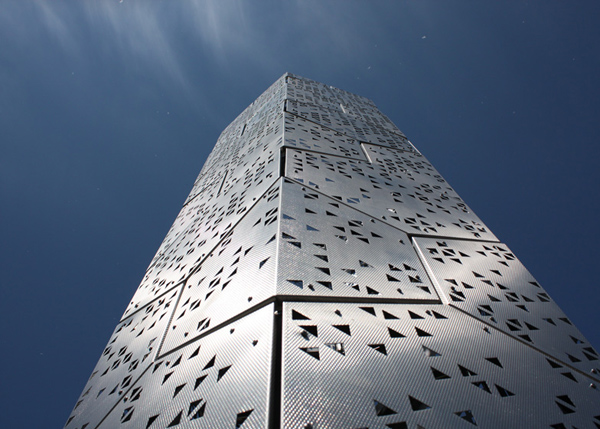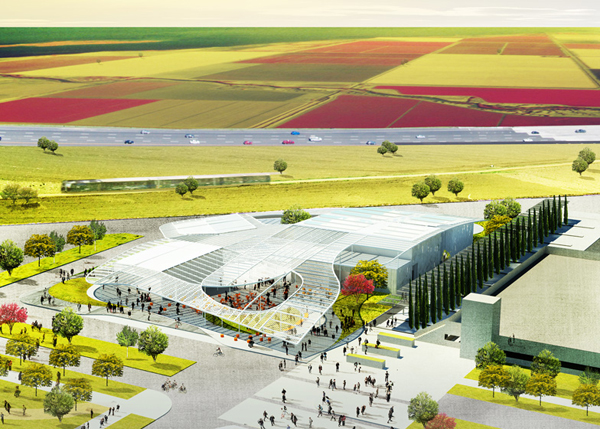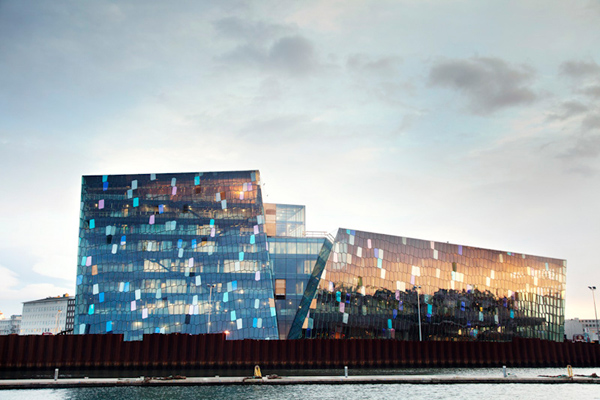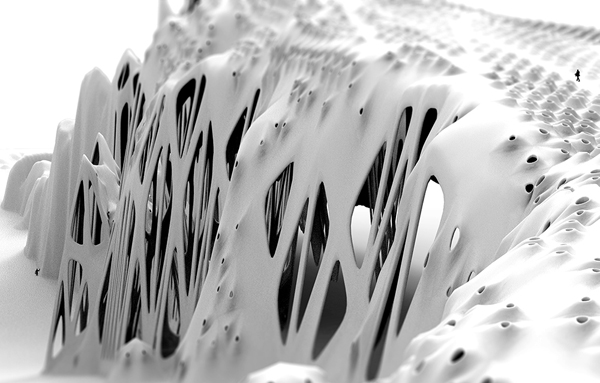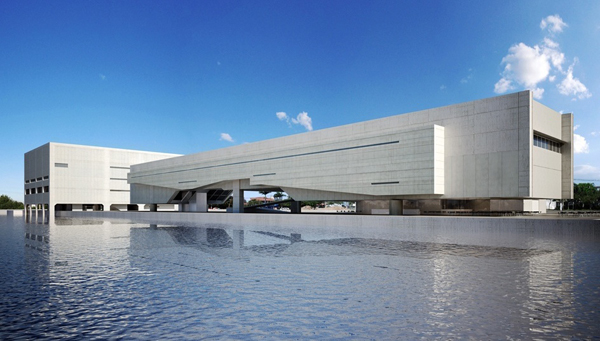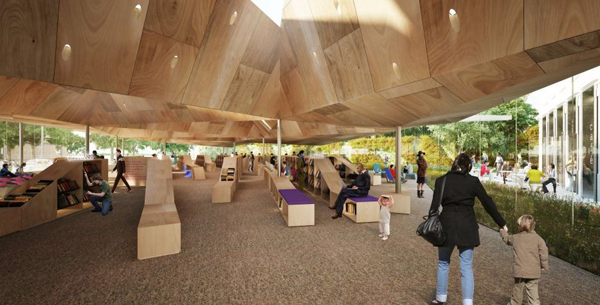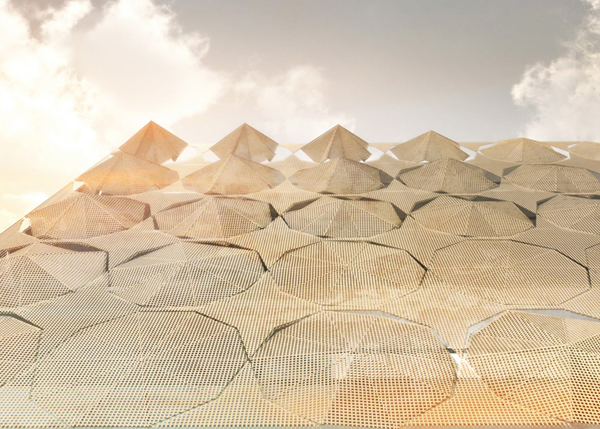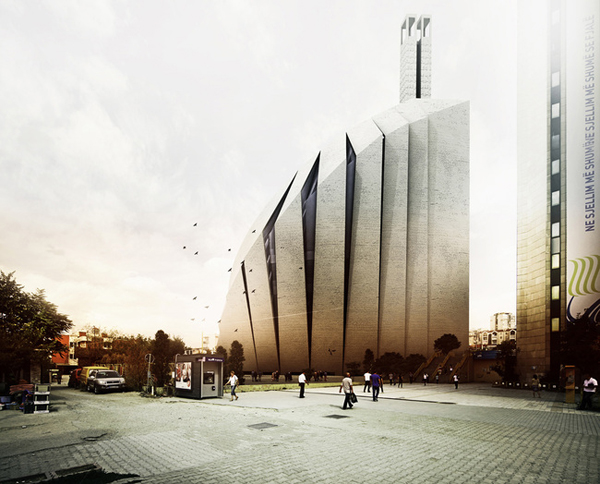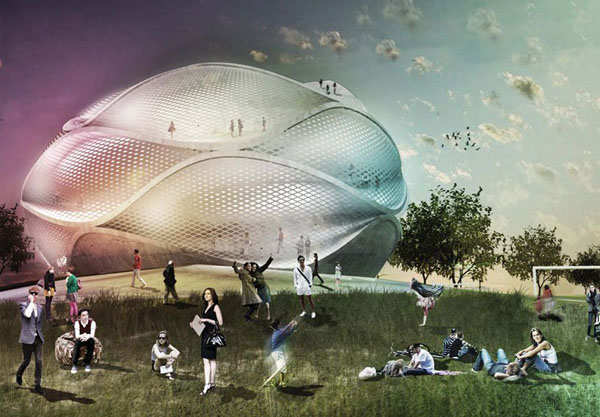The high-rise, named Elevator B, is an urban habitat for a colony of honeybees, designed by architecture students from the University at Buffalo. The tower is a winning entry of the university’s Hive City competition, which asked students to design a habitat for the bees. This unique skyscraper has generated great public curiosity, due to its residents and bold design. It is located in Silo City – a group of abandoned grain elevators and silos on the river. The project acts as a symbol of the site’s economic and environmental regeneration.
Clad in perforated stainless steel panels, parametrically designed to protect the hive and the visitors from the wind, while allowing solar gain in winter and shading in summer, the 22 feet tall tower is a steel structure, build using standard steel angle and tube sections. The internal layer of the bees’ house is done as a cypress box, with a laminated glass bottom, through which the bees can be observed. The box is attached to a system of pulleys so the beekeepers can bring it safely down to ground for maintenance. The project is named Elevator B, due to this mechanism. Read the rest of this entry »

